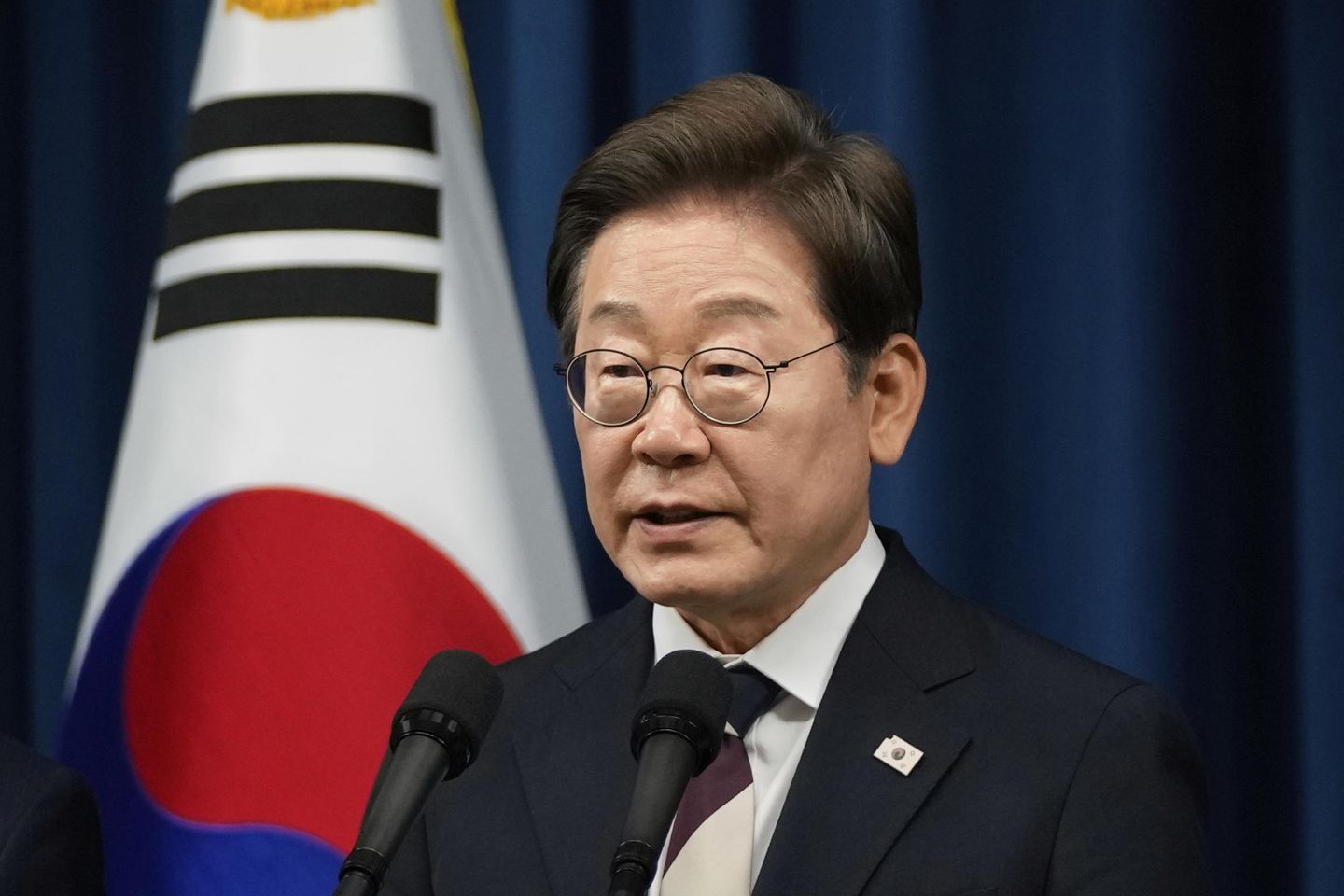
South Korean President Lee Jae-myung faces a daunting task when he meets with President Trump on Monday to press the U.S. leader on stalled talks with North Korea, the future of the Washington–Seoul alliance and increasing cooperation between Pyongyang and Moscow.
Mr. Lee is barely two months into office, but arrives in Washington with an ambitious to-do list for his high-stakes, three-day trip. Ahead of his meeting with Mr. Trump, the South Korean president will also travel to Japan to discuss trade and defense issues with Tokyo.
But he faces a skeptical and demanding ally in Mr. Trump, an America-first president who is more transactional than his predecessors. That has sparked fears in Seoul that Mr. Trump will demand higher payments to support the U.S. troop presence in South Korea or even scale back America’s military footprint there to ramp up his focus on China.
The stationing of U.S. troops in South Korea is expected to be the thorniest issue during Monday’s meeting. America has roughly 28,500 troops stationed in South Korea, a remnant from the Korean War that serves to deter North Korean threats. Mr. Trump is pushing Seoul to pay significantly more for those troops.
South Korea has already ramped up its burden-sharing in recent years. It increased its contribution to the stationing of U.S. forces in the country to $1 billion, a roughly 14% increase over the last agreement.
Seoul has also paid the entire cost of constructing the largest overseas U.S. military base, Camp Humphreys.
Mr. Trump is demanding more. He wants all U.S. allies to increase their defense spending to 5% of gross domestic product, but South Korea is at 3.5%. He’s also pushed for South Korea, one of the richest nations in the world, to cover more of the costs of U.S. troops, possibly increasing its burden sharing to $5 billion or $10 billion.
“This will require some creativity by the two allies to find ways to increase South Korean burden-sharing. It could come in the form of defense-industrial cooperation, the cost of military exercises, arms transfers, things of this nature,” said Victor Cha, president of the Geopolitics and Foreign Policy Department and Korea Chair at the Center for Strategic and International Studies, at a press briefing.
Derrick Morgan and Anthony Kim, researchers at the Heritage Foundation, wrote in a briefing previewing Mr. Lee’s visit that a munitions or artillery deal could be one way to increase South Korea’s burden sharing.
“The United States would reach maintenance and production targets faster and more efficiently while leveraging the interplay between economic security and national security,” they wrote, “especially in a broader cooperative frame of strategic burden sharing and alliance modernization to reflect new geoeconomic and security environments.”
The Pentagon has stressed that no decisions have been made, but reports have surfaced that the Defense Department is considering removing some troops from South Korea. If the move does happen, the Trump administration could seek to reshape U.S. Forces Korea as part of a broader military focus on ensuring the capability to quickly respond to a conflict with China over Taiwan.
Gen. Xavier Burnson, commander of the U.S. Forces Korea, said earlier this month that it’s not clear that South Korea would be involved in any conflict over Taiwan, which China has claimed as its own.
“What’s being asked of Korea is to be stronger against [North Korea] – that we might have the flexibility as we modernize our alliance so that we could do other things,” he told reporters at a briefing.
Reducing the size and role of the U.S. Forces in Korea could leave Seoul with fewer benefits but higher costs and risks at a time when the North Korean nuclear threat is growing. Mr. Lee will face pressure at home to ensure that U.S. commitments to deterrence and readiness against North Korea aren’t affected. That could potentially be accomplished by increasing U.S. airpower in the region.
Keeping Pyongyang in check is another item Mr. Lee intends to press with his U.S. counterpart. North Korean Leader Kim Jong Un has vowed a “rapid expansion” of his country’s nuclear program, and his sister dissed Mr. Lee this week, saying the South Korean president is “not the sort of man who will change the course of history.” She also said there is no role for Seoul to play in regional diplomacy.
Mr. Lee has vowed to defuse tensions with North Korea and is pressing Washington to do the same. However, with conflicts between Israel and Hamas and Ukraine and Russia on the front burner, North Korea’s nuclear ambitions have received little attention in Washington.
South Korean National Security Advisor Wi Sung-lac said improving relations with North Korea is crucial to the Trump-Lee summit. Mr. Wi called for “building trust and dialogue” between the U.S. and North Korea.
“We’re encouraging this, though North Korea’s position is extremely rigid and it’s difficult to expect any new developments in the short term,” he said in a briefing to reporters ahead of the trip.
North Korea has cut off official communications with Seoul and Washington, and has test-fired missiles in defiance of United Nations Security Council sanctions.
Mr. Trump and Mr. Kim met in person three times during the U.S. president’s first term, but he was unable to convince the North Korean leader to back off from developing his nuclear weapons program.
Mr. Lee last month struck a trade deal with Mr. Trump to spare his country from the Trump administration’s highest tariffs, after pledging to invest hundreds of billions of dollars in the U.S.
Monday’s meeting could include talks to hammer out the details of South Korea’s $350 million investment fund for U.S. industries, centered around shipbuilding, a sector Mr. Trump has highlighted as critical for U.S. and Korean relations.
South Korea has one of the largest trade surpluses with America and Mr. Trump is eager to hear how Mr. Lee intends to shrink that gap.
“Donald Trump focuses on merchandise trade deficits with allies with a laser beam. So he may want to see more commitment by South Korea to try to reduce that trade surplus,” Mr. Cha said.
One area not covered in the initial trade framework was digital trade, which is rapidly growing in South Korea. It could be a focus of any trade talks.
Mr. Lee’s visit to Japan ahead of arriving in Washington is a rare diplomatic double play that may bolster his success in achieving a trade deal. Seoul and Tokyo share many interests threatened by Mr. Trump’s efforts to reset global trade and security commitments.
Japan is also under pressure to pay more for the thousands of U.S. troops stationed there and increase its defense spending. Like Korea, it also has a vibrant automobile industry that has attracted Mr. Trump’s attention.
Mr. Lee’s meeting with Japanese Prime Minister Shigeru Ishiba is largely about coordinating leverage as the countries seek to partner in the face of Mr. Trump’s demands. It might help both countries, which have historically feuded, to work out a three-way framework with Washington rather than engage unilaterally.







![Florida Man With Violent History Arrested for Choking a Cop [WATCH]](https://www.right2024.com/wp-content/uploads/2025/06/Eleven-Stabbed-in-Attack-at-Salem-Homeless-Shelter-Across-From-350x250.jpg)








